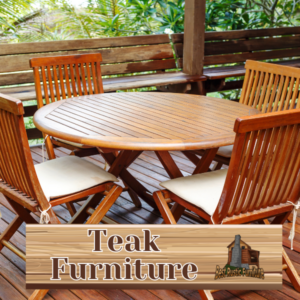
The minimalist movement is a lifestyle and design philosophy that emphasizes simplicity, functionality, and an intentional reduction of excess. It advocates for a clean and clutter-free aesthetic, both in physical spaces and in various aspects of life. By embracing minimalism, individuals can experience a range of benefits, including enhanced mental well-being, simplified daily routines, and reduced stress levels.
Minimalism promotes mental well-being by creating a calm and peaceful environment. With fewer distractions and visual clutter, individuals can experience increased focus, clarity, and a sense of serenity in their surroundings. Minimalism also simplifies life by encouraging individuals to prioritize their possessions, activities, and commitments, leading to a more intentional and purposeful lifestyle.
Minimalism helps in reducing stress by eliminating the accumulation of unnecessary belongings and obligations. By decluttering physical spaces and streamlining daily routines, individuals can experience a sense of freedom and lightness. Clean lines in interior design play a crucial role in creating a minimalist aesthetic. This design approach emphasizes simplicity, straight lines, and a focus on essential elements. Achieving clean lines involves decluttering, choosing neutral color palettes, incorporating functional furniture pieces, and utilizing organizational systems.
In addition to clean lines, embracing clean spaces is another significant aspect of minimalism. Decluttering and organizing living spaces not only create a visually pleasing environment but also provide practical benefits. Clean and organized spaces promote a sense of calm and clarity, improve productivity, and make it easier to maintain tidiness.
Minimalism can extend beyond physical spaces into different areas of life. Creating a minimalist wardrobe involves curating a collection of essential and versatile clothing items, eliminating decision fatigue, and reducing the overall volume of clothes. A minimalist digital life focuses on decluttering digital spaces, minimizing screen time, and organizing digital files and activities. Minimalist finances simplify financial life by adopting a frugal and mindful spending approach, automating financial processes, and reducing materialistic desires.
By embracing the minimalist movement and incorporating its principles into various areas of life, individuals can experience a sense of balance, harmony, and fulfillment. The clean lines and clean spaces associated with minimalism create an environment that promotes well-being and enhances the overall quality of life.
Key takeaways:
- Minimalism promotes mental well-being: By decluttering and simplifying our living spaces, we can create an environment that supports peace of mind and reduces stress.
- Clean lines create a sense of calm: Incorporating clean lines in interior design helps in creating a visually appealing and tranquil living space.
- Embracing minimalism leads to organized spaces: Decluttering and organizing our living areas not only improves functionality but also reduces the time and effort spent on maintaining cleanliness.
What is the Minimalist Movement?
What is the Minimalist Movement?
The minimalist movement is a lifestyle philosophy that focuses on simplicity and intentional living. It emphasizes the removal of excess physical possessions and clutter, as well as the simplification of daily routines and habits. This movement encourages individuals to prioritize experiences, relationships, and personal growth over material possessions. By adopting minimalism, people aim to find contentment with less and create a sense of calm and clarity in their lives. So, what is the minimalist movement? It’s a way of life that encourages decluttering and organizing your living space, practicing mindfulness and intentional consumption, and prioritizing experiences and relationships over material possessions.
What are the Key Principles of Minimalism?
The key principles of minimalism focus on simplicity, intentionality, and mindfulness in all aspects of life. They emphasize owning fewer possessions, decluttering, and prioritizing experiences over material possessions. Minimalism encourages individuals to only keep items that serve a purpose or bring genuine joy. It promotes living in the present moment, eliminating distractions, and reducing waste. By embracing minimalism, individuals can achieve a more organized and peaceful lifestyle, free from the burden of excessive belongings. Ultimately, the key principles of minimalism help individuals prioritize what truly matters to them and create a more meaningful and fulfilling life.
So, what are the key principles of minimalism? Well, they can be summarized as simplicity, intentionality, and mindfulness. These principles guide individuals to own fewer possessions, declutter their lives, and focus on experiences rather than material goods. Minimalism teaches us to only keep items that serve a purpose or bring genuine joy to our lives. It encourages living in the present moment, eliminating distractions, and reducing waste. By embracing minimalism, we can achieve a more organized and peaceful lifestyle, free from the burden of excessive belongings. Ultimately, these principles help us prioritize what truly matters and create a more meaningful and fulfilling life.
If you’re interested in incorporating minimalism into your daily life, here are some suggestions:
| 1. Start small by decluttering one area of your home at a time. |
| 2. Practice mindful shopping by only purchasing items you truly need or love. |
| 3. Prioritize experiences over material possessions by investing in activities that bring you joy. |
| 4. Limit screen time and digital clutter by organizing and simplifying your digital spaces. |
| 5. Embrace a minimalist wardrobe by curating a collection of versatile and high-quality clothing pieces. |
By implementing these principles, you can cultivate a minimalist mindset and enjoy the benefits of simplicity and clarity in all areas of your life.
The Benefits of Embracing Minimalism
The Benefits of Embracing Minimalism
Incorporating minimalism into your life can bring about a myriad of advantages, such as:
- Promoting Simplicity and Clarity: By embracing minimalism, you create uncluttered and organized spaces that foster a sense of calmness and clarity.
- Time and Energy Saved: Owning fewer possessions translates to spending less time on cleaning, organizing, and maintaining them, freeing up time and energy for more meaningful pursuits.
- Attaining Financial Freedom: One of the core principles of minimalism is practicing mindful consumption, which ultimately helps you save money by abstaining from unnecessary purchases.
- Alleviating Stress: The minimalist lifestyle eliminates the stress and overwhelming feelings that stem from having an excess of belongings, promoting a more relaxed state of mind.
- Positive Environmental Impact: By consuming less and valuing quality over quantity, you actively contribute to waste reduction and the sustainability of our planet.
How does Minimalism Promote Mental Well-being?
Minimalism Promotes Mental Well-being by reducing clutter, distractions, and excessive material possessions that can create stress and anxiety. Simplifying your living spaces can create a sense of calm and serenity, allowing you to focus on what truly matters. With fewer possessions to manage, you have more time and energy for self-care, personal growth, and meaningful relationships. Minimalism encourages mindfulness and intentionality, helping you prioritize your mental health and well-being. By cultivating a minimalist mindset, you can create a peaceful and harmonious environment that supports mental clarity and emotional balance.
Ancient philosophies, such as Stoicism and Buddhism, embraced simplicity and minimalism as pathways to inner peace and enlightenment, emphasizing the importance of detachment from material possessions. These philosophies recognized that true happiness and well-being stem from within, rather than from external possessions or accomplishments. In today’s modern world, the minimalist movement draws from these ancient wisdom traditions, offering practical strategies to promote mental well-being amidst the complexities and distractions of contemporary life.
How does Minimalism Simplify Your Life?
How does Minimalism Simplify Your Life? Minimalism simplifies your life by reducing clutter, minimizing distractions, and focusing on what truly matters. Here are some ways how minimalism can simplify your life:
- Less clutter: By decluttering and letting go of unnecessary possessions, you create a clean and organized living space.
- Time and energy saving: With fewer belongings to manage, you spend less time and energy on cleaning, organizing, and maintaining them.
- Clearer focus: By eliminating distractions, minimalism helps you concentrate on your priorities and goals.
- Financial freedom: Simplifying your expenses and avoiding unnecessary purchases allows you to save money and achieve financial stability.
- Mental clarity: With less physical and mental clutter, you experience reduced stress and increased mental well-being.
A true story exemplifying the benefits of minimalism is that of Joshua Fields Millburn and Ryan Nicodemus, who embarked on a minimalist journey and transformed their lives. They cleared their clutter, let go of excessive possessions, and focused on meaningful experiences and relationships. This shift allowed them to find greater happiness, purpose, and fulfillment.
How does Minimalism Help in Reducing Stress?
How does Minimalism Help in Reducing Stress?
Reducing stress is one of the many benefits of embracing minimalism.
- Clutter-free environment: Minimalism promotes a clutter-free space, reducing visual distractions and creating a sense of calm.
- Mental clarity: By eliminating excess possessions and focusing on what truly matters, minimalism helps clear the mind and reduce mental clutter.
- Simplified routines: Minimalism encourages simplifying daily routines, minimizing decision fatigue, and reducing stress related to overwhelm.
- Better time management: With fewer distractions and obligations, minimalism allows for better time management and a greater sense of control over one’s schedule.
- Less financial pressure: Minimalism promotes mindful spending and intentional consumption, leading to financial stability and reducing stress related to money.
Creating Clean Lines in your Living Spaces
Creating clean lines in your living spaces can help achieve a minimalist aesthetic and promote a sense of calm and simplicity. Here are some tips for creating clean lines:
- Declutter: Remove unnecessary items and keep only what is essential for the space.
- Organize: Find storage solutions that hide away clutter and keep surfaces clear.
- Select furniture with clean designs: Choose furniture with straight lines and minimal ornamentation.
- Use a neutral color palette: Keep the color scheme simple and cohesive to create a harmonious look.
- Limit patterns and textures: Stick to one or two patterns or textures to maintain a streamlined appearance.
- Keep lines consistent: Ensure that lines are straight and parallel throughout the space, from furniture arrangement to wall hangings.
What are the Essential Elements of Clean Lines?
What are the Essential Elements of Clean Lines?
Clean lines are fundamental to minimalist design, as they create a sense of simplicity, order, and balance in a space. The key elements of clean lines can be summarized as follows:
| 1. | Straight and simple shapes: | Clean lines are defined by their straight edges and uncomplicated geometric forms, such as squares, rectangles, and circles. |
|---|---|---|
| 2. | Minimal ornamentation: | Clean lines prioritize the form and structure of objects, avoiding excessive embellishments or decorative details. |
| 3. | Streamlined surfaces: | The clean aesthetic of clean lines is achieved through smooth and uncluttered surfaces, devoid of unnecessary textures or patterns. |
| 4. | Balanced proportions: | Visual harmony is achieved through clean lines by maintaining balanced proportions between different design elements. |
| 5. | Consistent alignment: | Within spaces with clean lines, elements are often precisely and intentionally aligned, creating an overall sense of order and organization. |
True story: Sarah experienced a newfound sense of calm and clarity in her home when she embraced clean lines. By removing unnecessary clutter and opting for minimalist furniture with clean shapes, her living spaces felt open and inviting. The balanced proportions and streamlined surfaces of her minimalist design allowed her to focus on what truly mattered – spending quality time with her family and enjoying a tranquil and organized environment.
How to Achieve Clean Lines in Interior Design?
How to Achieve Clean Lines in Interior Design?
The concept of clean lines in interior design dates back to the early 20th century with the rise of minimalism. Influenced by movements like Bauhaus and Scandinavian design, clean lines became a fundamental aspect of modernist architecture and design. Architect Ludwig Mies van der Rohe famously said, “Less is more,” emphasizing the importance of simplicity and clarity in design. Today, achieving clean lines in interior design continues to be a popular trend, promoting minimalism and a sense of calm and order in our living spaces.
- Choose a minimal color palette. Stick to a few neutral colors like white, black, and gray to create a clean and cohesive look.
- Remove unnecessary clutter. Clear out any items that don’t serve a functional or aesthetic purpose to create a streamlined space.
- Select furniture with clean and simple lines. Look for pieces with sleek profiles and minimal ornamentation.
- Use geometric shapes in your decor. Incorporate geometric patterns or shapes in rugs, artwork, or furniture to add visual interest while maintaining clean lines.
- Emphasize symmetry and balance. Arrange your furniture and accessories in a balanced and symmetrical way to create a sense of order and harmony.
- Keep surfaces free of unnecessary objects. Limit decorative items and keep surfaces clear to enhance the minimalist aesthetic.
- Opt for minimal window treatments. Choose simple and sleek blinds or curtains that blend seamlessly with the overall design.
- Maximize natural light. Use large windows or strategically placed mirrors to bring in as much natural light as possible, making the space feel open and airy.
- Remember the mantra “less is more.” With clean lines, less is often more impactful. Keep your design choices simple and intentional.
Embracing Clean Spaces
By embracing clean spaces, we can bring a sense of calm and order to our lives, creating an environment that promotes productivity and relaxation. It is important to declutter, removing unnecessary items and organizing belongings to create a clean and minimalistic space. Keeping it simple is key, choosing furniture and decor with clean lines and minimalistic designs to create a sense of openness. Additionally, maximizing storage with the help of storage solutions allows us to keep items hidden away and maintain a clutter-free space.
One of the essential elements in creating clean spaces is letting natural light flood in. Opening up windows allows natural light to enter, creating a bright and airy atmosphere. Lastly, it is crucial to establish a routine for regular cleaning to ensure cleanliness, tidiness, and a fresh environment.
How to Declutter and Organize Your Living Spaces?
Wondering how to declutter and organize your living spaces? Follow these simple steps to create a sense of calm and make your home more functional:
- Start small: Begin with one room or area at a time to avoid feeling overwhelmed.
- Sort and categorize: Go through your belongings and divide them into categories such as keep, donate, or discard.
- Create designated storage: Utilize storage solutions like bins, baskets, and shelves to keep items organized and easily accessible.
- Purge unused items: Say goodbye to things that are no longer needed or bring you joy.
- Maximize space: Make the most of vertical space and invest in space-saving furniture to optimize storage.
- Maintain a regular cleaning routine: Dedicate a few minutes each day to tidy up and put things back in their designated places.
By following these steps, you’ll be able to declutter and organize your living spaces, creating a more organized and enjoyable home environment.
What are the Benefits of Clean and Organized Spaces?
- What are the Benefits of Clean and Organized Spaces? Having clean and organized spaces offers numerous benefits for your overall well-being and quality of life. Here are some key advantages:
- Reduced stress: When your environment is tidy, it promotes a sense of calm and relaxation, making it easier to unwind and destress.
- Improved productivity: Clean and organized spaces enable better focus and concentration, leading to increased productivity and efficiency.
- Enhanced mental clarity: Clutter-free spaces help declutter the mind, allowing for clearer thinking and decision-making.
- Increased motivation: A neat and organized space boosts motivation and inspires you to take on tasks and projects.
- Better physical health: Clean spaces reduce the risk of allergies, respiratory problems, and other health issues caused by dust, mold, and bacteria.
Pro-tip: Establish a regular cleaning and organizing routine to maintain the benefits of clean and organized spaces.
Incorporating Minimalism into Different Areas of Your Life
- By incorporating minimalism into different areas of your life, you can bring a sense of simplicity and balance.
- To embrace minimalism, start by decluttering your physical space and getting rid of items you no longer need or use.
- Simplify your wardrobe by keeping only essential pieces that you love and wear regularly.
- Streamline your digital life by organizing files, deleting unused apps, and unsubscribing from unnecessary emails.
- Practice mindful consumption by being intentional about what you bring into your home and life.
- Focus on quality over quantity by investing in well-made, long-lasting items instead of accumulating many cheap items.
- To create more time for yourself, clear your schedule by prioritizing activities and commitments that truly add value to your life.
- Cultivate a minimalist mindset by letting go of attachment to material possessions and embracing the idea that less is more.
Minimalist Wardrobe: How to Simplify Your Clothing Collection?
If you want to simplify your clothing collection and embrace a minimalist wardrobe, here is how to do it:
- Declutter: Remove any items that you no longer wear or need from your collection.
- Assess your style: Take some time to determine the colors, patterns, and silhouettes that you truly love and feel confident in.
- Create a capsule wardrobe: Choose a few versatile and high-quality pieces that can easily be mixed and matched.
- Focus on quality over quantity: Invest in clothing that is well-made and will last longer.
- Stick to a color palette: Select a limited range of colors that can be easily coordinated.
- Organize: Arrange your clothing in a way that makes it simple to find and access.
- Shop mindfully: Only buy new items when necessary and carefully consider their impact on your wardrobe as a whole.
Minimalist Digital Life: How to Declutter Your Digital Spaces?
To embrace a minimalist digital life and declutter your digital spaces:
- Organize files and folders by creating a clear and logical system.
- Delete unnecessary files, including duplicates, old photos, and unused apps.
- Manage email and unsubscribe from newsletters and promotions you no longer need.
- Streamline your social media accounts by unfollowing accounts that don’t bring value.
- Clear out your digital desktop by removing unnecessary icons and organizing files into folders.
Looking to achieve a minimalist digital life and declutter your digital spaces? Here’s how:
- Create a clear and logical system to organize files and folders.
- Get rid of unnecessary files, such as duplicates, old photos, and unused apps.
- Efficiently manage your email by unsubscribing from newsletters and promotions that are no longer needed.
- Optimize your social media accounts by unfollowing accounts that don’t bring value.
- Declutter your digital desktop by removing unnecessary icons and organizing files into folders.
Minimalist Finances: How to Simplify Your Financial Life?
To simplify your financial life and embrace minimalist finances, here are some practical steps you can take:
- Create a budget: Track your income and expenses to prioritize spending and identify areas where you can cut back.
- De-clutter your expenses: Cancel unnecessary subscriptions and memberships that you no longer use or need.
- Embrace cash and reduce credit card usage: Pay for purchases with cash to avoid impulse spending and minimize debt.
- Minimize material possessions: Adopt a mindset of conscious consumerism to avoid unnecessary purchases and focus on mindful spending.
- Automate your finances: Set up automatic bill payments and savings contributions to simplify your financial management.
How to Simplify Your Financial Life and Embrace Minimalist Finances?
John was overwhelmed with debt and financial stress. He decided to embrace minimalist finances and started by creating a budget. By cutting unnecessary expenses and embracing a simpler lifestyle, he was able to pay off his debt, build an emergency fund, and achieve financial freedom. Now, he enjoys a more peaceful and fulfilling life, free from the burden of excess financial clutter.
Some Facts About Embracing the Minimalist Movement: Clean Lines, Clean Spaces:
- ✅ Minimalism offers a new definition of luxury centered around intentionality, mindfulness, and a more meaningful life. (Source: Our Team)
- ✅ Luxury is not about the abundance of possessions, but the freedom from them. (Source: Our Team)
- ✅ Tiny houses exemplify this minimalist approach to luxury, showcasing that luxury stems from mindset and intentionality rather than size. (Source: Our Team)
- ✅ The Zen influence behind the minimalist movement teaches us to find beauty and serenity in simplicity. (Source: Our Team)
- ✅ Minimalist art reflects the values of simplicity and tranquility, eliminating visual clutter to induce a calming state of mind. (Source: Our Team)
Frequently Asked Questions
What is the minimalist movement?
The minimalist movement is a lifestyle choice that embraces simplicity, intentionality, and mindfulness. It focuses on prioritizing what truly matters and letting go of excess possessions and distractions. This approach to life aims to create a more meaningful and contented existence.
How does minimalist interior design differ from traditional design?
Minimalist interior design emphasizes clean lines, functionality, and aesthetics. It strips away excess and embraces a serene aesthetic, creating a visually harmonious and purposeful space. In contrast, traditional design might include more decorative elements and a varied color palette.
What are the core principles of minimalist interior design?
The core principles of minimalist interior design include clean lines and simplicity, decluttering and prioritizing essentials, thoughtful use of space and negative space, and neutral color palettes with limited décor. These principles aim to create a timeless backdrop that promotes a sense of calm and mental clarity.
How can I achieve a minimalist look in my contemporary living space?
To achieve a minimalist look in your contemporary living space, consider using earth tones and subdued color palettes such as soothing greys, gentle beiges, and serene whites. Choose furniture that serves a practical purpose and is thoughtfully selected for both utility and aesthetics. Incorporate clever design elements like multi-functional furniture and wall-mounted shelves to maximize storage space.
What is the connection between minimalist art and interior design?
Minimalist art reflects the values of simplicity and tranquility by eliminating visual clutter and inducing a calming state of mind. Similarly, minimalist interior design embraces clean lines, open spaces, and a serene aesthetic. Both minimalist art and interior design draw inspiration from Japanese Zen aesthetics and prioritize minimalism as a lifestyle choice.
How can minimalist interior design create a sense of calmness?
Minimalist interior design creates a sense of calmness by embracing simplicity, functionality, and a serene aesthetic. It promotes an open and airy feel through the use of empty spaces, clean lines, and a neutral color palette. The intentional and thoughtful design choices contribute to a haven of calmness and tranquility in your living space.






